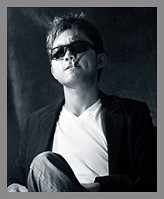 What a delightful thought it could be when something so small and simple becomes so extraordinary. Especially when you read a book with no expectation at the start and closed the final page realising that there’s a warm flutter in your heart. Especially when you come to think of it that it was a children’s book you’ve just read. Nonetheless, as famous writers of our world say, never underestimate the power of a children’s novel.
What a delightful thought it could be when something so small and simple becomes so extraordinary. Especially when you read a book with no expectation at the start and closed the final page realising that there’s a warm flutter in your heart. Especially when you come to think of it that it was a children’s book you’ve just read. Nonetheless, as famous writers of our world say, never underestimate the power of a children’s novel.
This is a tale focused on a central character by the name of Christopher Boone. He’s 15 years old, a teenager but yet unlike any other teenager. He has Aspesger’s Syndrome, which according to Wikipedia, delete-if-applicable, is “an autism spectrum disorder characterised by difficulties in social interaction and by restricted, stereotyped interests and activities”. Here is a world seen by a viewpoint of an autistic teenager, all complexity reduced to being wholesomely translated in a mind of a child with the quirkiness of logic. Raised by his widowed father in the suburbs of Swindon, England, he’s not without capabilities. He excels in Math, has an extremely excellent logic, but has colour problems and hates yellow and brown. He doesn’t understand facial expressions, fears physical contact, and most of all, very anti-social. But when one night, as the title suggests quite literally, when Christopher discovers the neighbour dog stabbed with pitchfork and dead on the lawn, he embarks in a journey that would turn his whole world upside down in a self-discovery that is heartbreaking, heart-tugging, and heartwarming.
Soon he becomes Sherlock Holmes, solving the mystery of the dog, and on the way, finding bitter truths about his father, his mother and the messy, sad life he’s in, that everything is not what it seems to be – that the world is not black and white, but all in the shades of grey.
Cunningly, Mark Haddon is not a psychological expert but he evokes astounding emotions limited in the eyes of this autistic child and his words are nothing but straightforward, precise-sharp, and no-nonsense narrative yet creates a depth beneath his tale a very human core. It is very funny too, edged with humour and logical sensibilities that you might have never noticed before in your entire life which would make you laugh; embarrassing to the readers as its utterly honest, and uplifting to an extreme you wanted to be absorbed inside the book and help this kid.
But where Haddon really triumphs is that he never made Christopher a piteous character: instead he gives us an admirable character with courage and hope despite of his inabilities and limitations. One powerful part of the story is where Christopher had an uncontrollable tantrum and hit his father severely and then blacked out. But when he gathered consciousness, he realised he had bruised his father, but in spite of that, the father just held out his open palm in front of Christopher (as the child doesn’t understand physical contact, i.e. hugging), and Christopher opened his palm back – and that was their hug. Brilliantly evoked and captivatingly moving. There’s no reason why such a book shouldn’t be read by millions across the scale of human existence.
VERDICT:
A story about a child’s autism set against a troubled world is a kaleidoscopic experience yet an engaging read – and it’s also one of the most human, most powerfully moving children’s novel I’ve ever read in my entire two-decade-spanning life. Guess what the moral lesson is: even adults should read this, and if you’re human, and not some robot belonging to a factory somewhere, you’re welcome to shed some grateful tears that your life is probably better than this kid Christopher’s.
RATING: A+
Book Review: THE CURIOUS INCIDENT OF THE DOG IN THE NIGHT-TIME by Mark Haddon
2008-02-02T04:41:00+08:00
Janz
Book Review|
Subscribe to:
Post Comments (Atom)
Followers
Blog Archive
- December (3)
- November (1)
- October (6)
- August (2)
- July (3)
- June (4)
- May (4)
- April (8)
- March (3)
- February (6)
- January (11)
- December (2)
- November (7)
- October (4)
- September (9)
- August (8)
- July (11)
- June (13)
- May (12)
- April (7)
- March (11)
- February (14)
- January (16)
- December (6)
- November (15)
- October (3)
- September (11)
- August (10)
- July (16)
- June (10)
- May (11)
- April (2)
- March (6)
- February (16)
- January (15)
- December (3)
- November (3)
- October (9)
- September (8)
- August (4)
- July (8)
- June (9)
- May (9)
- April (21)
- March (13)
- February (12)
- January (12)
- December (6)
- November (25)
- October (18)
- September (13)
- August (14)
- July (12)
- June (18)
- May (8)







